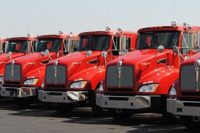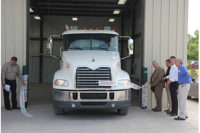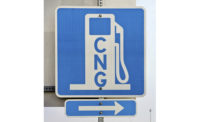It is well known throughout the truck community that regional and vocational trucks operating day cab tractors have very different design characteristics compared to full aerodynamic packages found on long haul sleeper tractors. Since fuel is the largest variable cost a trucker faces, it’s important companies take the time to study the physics of fuel economy.
There are numerous areas that affect fuel economy for both engine types as well as steps that can be taken to ensure your business optimizes its engine performance.
“Reports I’ve seen in the past have not been entirely accurate or clear on this subject,” says Hugh Donnell, North American truck market and truck OEM business leader for Cummins Westport, a Canada-based engine manufacturer of diesel and compressed natural gas (CNG) engines. “The key is to not fall into the trap of comparing a long haul sleeper fuel economy with 15-liter engine, full aerodynamic packages operating at 65-68 mph on interstate highways vs operating a 12-liter engine with a day cab tractor configuration that operates mostly on secondary roads or urban highways where traffic can average around 40 mph. The fact is there is no aerodynamic benefit for any Class 8 tractors at speeds below 55 mph.”
In a white paper titled “Secrets of Better Fuel Economy, the Physics of MPG,” Cummins Westport describes how natural gas-powered engines are slightly less fuel efficient than their diesel counterparts due to diesel’s high compression ratios and ability to convert the fuel’s energy into usable work.
Case in point: The key to fuel efficiency is to understand fuel economy. Here’s some helpful hints on how to control variables that affect fuel usage.
Reduce aerodynamic drag. “Every 2% reduction in aerodynamic drag results in approximately 1% improvement in fuel economy,” according to the white paper. Keep in mind, it will be more efficient to identify drag reduction opportunities on long haul trucks that maintain higher speeds on regional trucks or day cabs. According to a study conducted by the International Council on Clean Transportation (ICCT), Washington, D.C., “wind tunnel and in-use testing on test tracks indicates that individual aerodynamic aids can reduce distance-specific fuel use from U.S. trucks by 1-15%; packages of several different types of devices used together can reduce fuel use by 25% or more.”
Drive on worn tires. Tires make the biggest difference in miles per gallon below 50 mph. “The break-in period for tires is between 35,000-50,000 miles,” the white paper states. Worn tires provide less resistance, making the vehicle roll more efficiently, and can improve fuel economy by up to 7%. The ICCT study says that 13% of a truck’s energy use is accounted for by rolling resistance. Variables that affect the efficiency of tires include the width, tread, air pressure and temperature.
Train your drivers. Drivers can account for up to 30% variation in your fuel economy. Excessive speed, excessive idling, operating in the wrong gear and rapid stops and starts all consume extra fuel. Best practices for drivers include coasting to a stop, maintaining a high average vehicle speed, utilizing cruise control and minimizing percent idle time, proper shifting and service brake activity, to name a few.
Maintain your engines. It’s important to optimize your engine by ensuring everything is in check. “Coolant and lube oil operating temperatures can contribute greatly to fuel efficiency,” according to the white paper. “We’ve found fleets who closely follow our recommended maintenance guidelines and intervals, including both spark plugs and engine oil, will have a better experience and operate their CNG fleet more efficiently,” adds Donnell.
Although diesel engines can provide slightly improved fuel efficiencies, the choice to convert from a diesel to CNG engine can contribute to an optimal running fleet and help a CNG fleet close the gap in mpg performance. Making simple adjustments to different variables is all it takes to see results. Owners who know and understand the physics behind fuel efficiencies will reap the benefits of a healthier fleet— and healthier bottom line.



